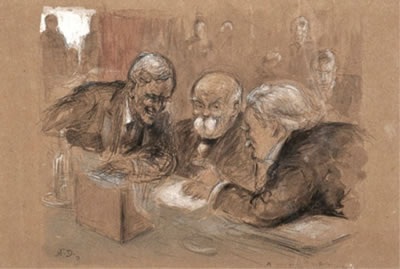On March 19, 1920, the U.S. Senate rejected the Treaty of Versailles for a second time, preventing the United States from joining the League of Nations. This decision shaped the course of international diplomacy and kept America out of post-war European affairs.
Despite President Woodrow Wilson’s efforts, strong opposition in the Senate, led by Henry Cabot Lodge, failed the treaty. Some feared it would entangle the U.S. in future conflicts, while others wanted amendments that Wilson refused to accept.
Fun Facts:
- A Second Rejection: The U.S. Senate had already rejected the Treaty of Versailles in November 1919. On March 19, 1920, a second vote sealed its fate, keeping the U.S. out of the League of Nations.
- Wilson’s Fight for the Treaty: President Woodrow Wilson strongly advocated for the treaty, believing it would ensure lasting peace. However, after suffering a stroke in 1919, he was unable to lobby for support personally.
- The Opposition: Led by Senator Henry Cabot Lodge, opponents feared the League of Nations would force the U.S. into future wars without Congressional approval.
- No Compromise: Some senators proposed amending the treaty to address concerns about national sovereignty. Wilson, however, refused any changes, leading to its ultimate failure.
- America Stays Out: Without U.S. involvement, the League of Nations lacked enforcement power, weakening its ability to prevent future conflicts. Some historians argue that this contributed to the rise of World War II.
- A Treaty without the U.S.: While the treaty officially ended World War I, the U.S. signed a separate peace agreement with Germany in 1921.
Would history have been different if the Senate had approved the treaty? The debate continues.

